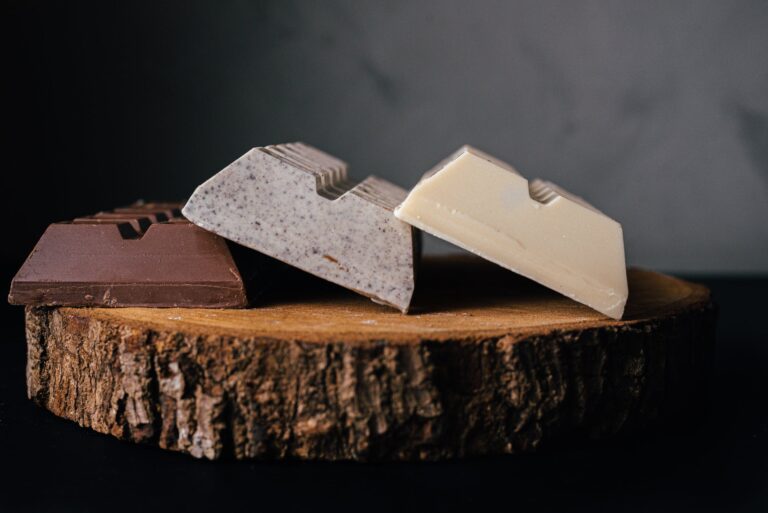
For many of us, chocolate is one of life’s ultimate food pleasures.
Did you know it’s estimated that we consume around 7.2 million metric tons of chocolate? (A looot!) But how good or bad is chocolate for us and is there a case to be made for chocolate as a healthy food?
Milk, dark and white: which is best?
Dark: is considered to be the healthiest option because it contains more cocoa (between 70-99%) and less sugar and milk than its milk and white counterparts. It also contains antioxidants which could lower the risk of heart disease.
Milk: is the most popular option around the world and must contain at least 25% cocoa solids, according to EU regulations. This is a significant jump down from the cocoa content in dark chocolate – milk chocolate also contains more sugar than the latter.
White: unfortunately, there is zero evidence to suggest that white chocolate is anything other than bad for you, except in moderation. The majority of white chocolate has a cocoa rate of around 20% and for what it lacks in cocoa it makes up for in high sugar content.
So, now we know that dark chocolate comes out on top as the healthiest cocoa treat, let’s take a look at how it can benefit you (in moderation of course)!
Chocolate and mental health
Studies have suggested that eating 1-2 ounces of dark chocolate every day can reduce stress hormones, specifically cortisol.
As it doesn’t contain the high sugar of milk and white chocolate, it won’t leave you feeling the effects of a sugar low an hour after consumption, making it a great energy booster. What’s more, it’s been proven to boost serotonin and endorphins – the brain’s happy chemicals.
Dark chocolate and the menstrual cycle
Packed full of iron and zinc, dark chocolate is a great go-to food when you’re feeling a little worse for wear during that time of the month.
Women lose around 6-8 teaspoons of blood during their period, which means loss of iron too. Replacing this by eating iron-rich foods (such as dark chocolate, leafy greens and red meat) will keep anaemia at bay, whilst replacing zinc on your period has been proven to reduce pain and cramps, as it helps to boost blood flow.
Protecting you from sun damage
Research has shown that dark chocolate may protect against the negatives of sunlight. Raw cocoa beans contain high levels of antioxidants called flavanols which offer photoprotection benefits.
This said much of these get lost in the chocolate manufacturing process, but manufacturers are looking at ways in which they can retain these.
The moral of the story is?
At the end of the day, chocolate is still confectionary, something we all know should be enjoyed in moderation. Whilst there is a compelling case for dark chocolate as a healthy food, much of the research surrounding this idea is shrouded in ‘coulds, woulds, and mights’. If you’re looking for foods with some of the benefits we’ve discussed above, take a look at our diet and nutrition blogs for some inspiration.






I tend to stick with milk chocolate most of the time since that’s made available more often. But dark chocolate is decent for healthy snacking, like a few dark chocolate bites. Which are simple and easy to make